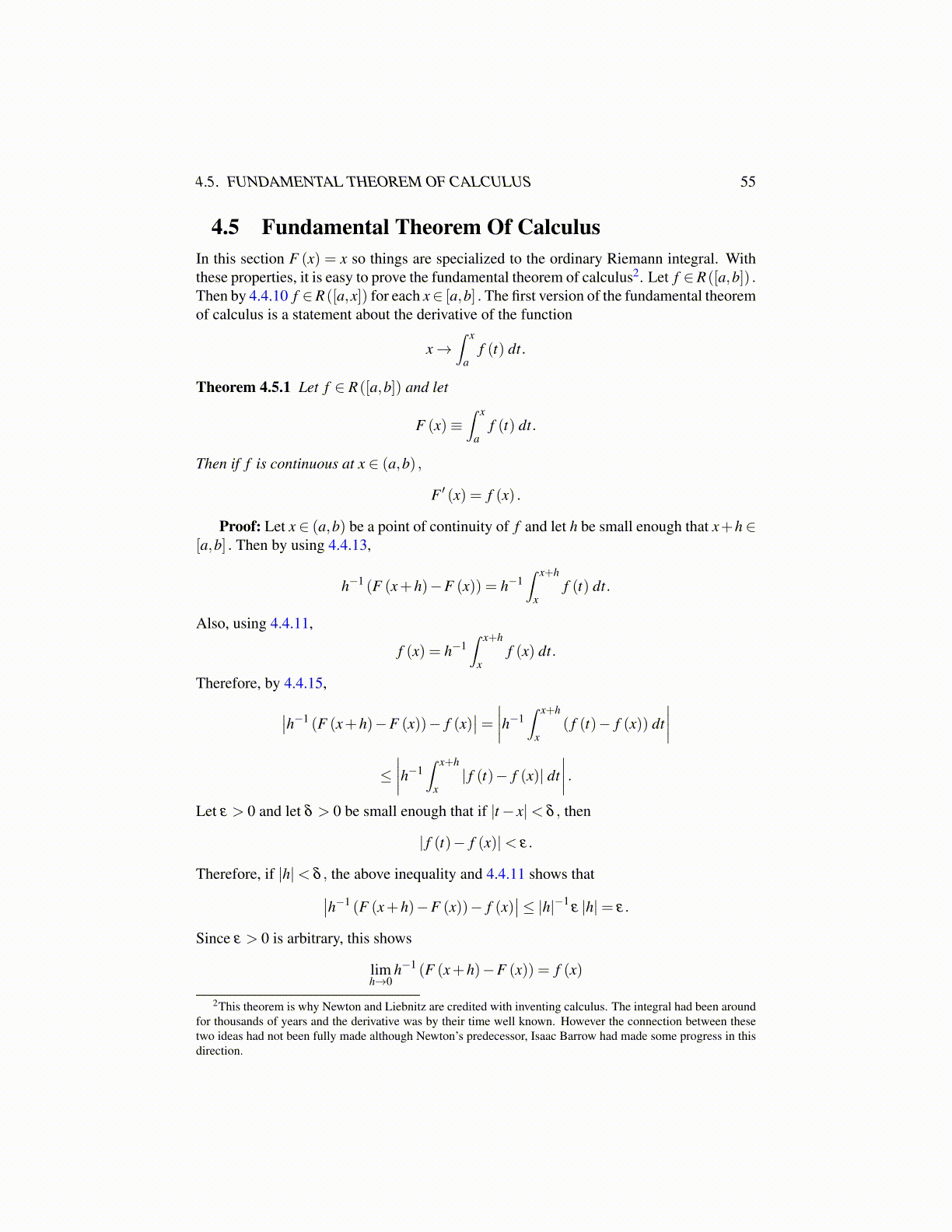
4.5. FUNDAMENTAL THEOREM OF CALCULUS 55
4.5 Fundamental Theorem Of CalculusIn this section F (x) = x so things are specialized to the ordinary Riemann integral. Withthese properties, it is easy to prove the fundamental theorem of calculus2. Let f ∈R([a,b]) .Then by 4.4.10 f ∈R([a,x]) for each x∈ [a,b] . The first version of the fundamental theoremof calculus is a statement about the derivative of the function
x→∫ x
af (t) dt.
Theorem 4.5.1 Let f ∈ R([a,b]) and let
F (x)≡∫ x
af (t) dt.
Then if f is continuous at x ∈ (a,b) ,
F ′ (x) = f (x) .
Proof: Let x ∈ (a,b) be a point of continuity of f and let h be small enough that x+h ∈[a,b] . Then by using 4.4.13,
h−1 (F (x+h)−F (x)) = h−1∫ x+h
xf (t) dt.
Also, using 4.4.11,
f (x) = h−1∫ x+h
xf (x) dt.
Therefore, by 4.4.15,∣∣h−1 (F (x+h)−F (x))− f (x)∣∣= ∣∣∣∣h−1
∫ x+h
x( f (t)− f (x)) dt
∣∣∣∣≤∣∣∣∣h−1
∫ x+h
x| f (t)− f (x)| dt
∣∣∣∣ .Let ε > 0 and let δ > 0 be small enough that if |t− x|< δ , then
| f (t)− f (x)|< ε.
Therefore, if |h|< δ , the above inequality and 4.4.11 shows that∣∣h−1 (F (x+h)−F (x))− f (x)∣∣≤ |h|−1
ε |h|= ε.
Since ε > 0 is arbitrary, this shows
limh→0
h−1 (F (x+h)−F (x)) = f (x)
2This theorem is why Newton and Liebnitz are credited with inventing calculus. The integral had been aroundfor thousands of years and the derivative was by their time well known. However the connection between thesetwo ideas had not been fully made although Newton’s predecessor, Isaac Barrow had made some progress in thisdirection.